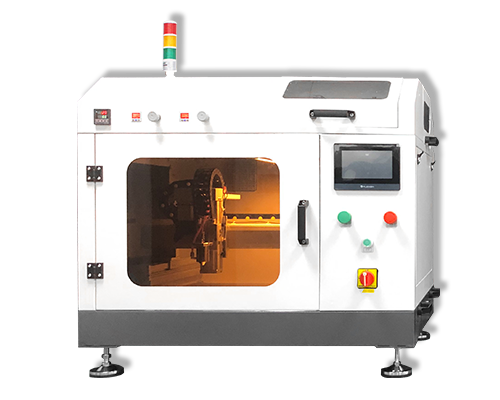Eight CO2 Capture Technologies
Eight CO2 Capture Technologies – High Volume Electrolyzer Coatings – Cheersonic
The technology to separate or capture carbon dioxide from flue gas streams has been commercialized for decades and consists of a combination of several industrial processes. The most advanced and widely adopted capture technologies are chemical absorption and physical separation; other technologies include membranes and recycling, such as chemical recycling or calcium recycling. Various techniques are described below.
1. Chemical absorption technology
A common process based on the reaction between carbon dioxide and chemical solvents such as ethanolamine compounds. Chemical absorption using amine-based solvents is the most advanced carbon dioxide separation technology.
Widely used for decades, it is currently used in many small and large projects in power generation, fuel retrofit and industrial production.
2. Physical separation technology
Based on adsorption, absorption, cryogenic separation or dehydration and compression. Physical adsorption utilizes solid surfaces. (activated carbon, alumina, metal oxides or zeolites), while physical absorption utilizes liquid solvents (eg: selenohexanol or retrosol). After capture by the sorbent, carbon dioxide is released by increasing the temperature (temperature swing adsorption) or pressure (pressure swing adsorption or vacuum swing adsorption).
Currently mainly used for natural gas processing and ethanol, methanol, hydrogen production, there are 9 commercial plants.
3. Oxidative fuel separation technology
This includes burning the fuel with near-pure oxygen and subsequent capture of the carbon dioxide released. Since the flue gas consists almost entirely of carbon dioxide and water vapor, the latter can be easily removed by dehydration to obtain high-purity carbon dioxide.
Currently in the pilot stage, construction has been completed on several projects such as coal-based power generation and cement production.
4. Membrane separation technology
Based on a polymer or inorganic device (membrane) with high carbon dioxide selectivity, it passes carbon dioxide but other gases are filtered.
The technical configuration varies by fuel and application. In natural gas processing, it is currently in the demonstration stage. Existing large capture plants based on membrane separation are operated by Petrobras. Membranes for carbon dioxide removal from syngas and biogas are already commercially available, while membranes for flue gas treatment are currently under development.
5. Calcium ion recycling technology
Contains the use of two main reactors for carbon dioxide capture at elevated temperatures. In the first reactor, quicklime (calcium oxide) is used as an adsorbent to capture carbon dioxide from the gas stream to form slaked lime (calcium carbonate). The slaked lime is then sent to a second reactor where it is regenerated, producing lime and pure carbon dioxide. Finally the quicklime is recycled back to the first reactor. Currently in pilot/pre-commercial phase. It has been tested in circulating fluidized bed power plants and cement manufacturing.
6. Chemical recycling technology
Like the calcium cycle, it is a two-reactor technology. In the first reactor, small metal particles (such as iron or manganese) combine with oxygen in the air to form metal oxides, which are then transported to the second reactor, where it reacts with the fuel to generate energy and concentrated carbon dioxide, which regenerates the metal, which is recycled back to the first reactor. The technology has already passed about 35 pilots for burning coal, gas, oil and biomass.
7. Direct separation technology
This includes capturing carbon dioxide process emissions from cement production by indirectly heating limestone using special calciners. The technology removes carbon dioxide directly from limestone without mixing it with other flue gases, greatly reducing the energy costs associated with gas separation.
Currently in the pilot stage, such as the pilot plant for Low Emission Intensity Lime and Cement (LEILAC) developed by Calix at the Heidelberg Cement plant in Lix, Belgium.
8. Supercritical carbon dioxide power generation technology
In a conventional power plant, flue gas or steam is used to drive one or more steam/gas turbines, and in a supercritical CO2 power cycle, supercritical CO2 (i.e., carbon dioxide above its critical temperature and pressure) is used as the cycle work quality. Supercritical carbon dioxide combustion engines typically use near-pure oxygen to burn the fuel to obtain a flue gas consisting only of carbon dioxide and water vapor. Two typical/demonstration projects with supercritical CO2 power cycles are currently in operation: NET Power’s Allam cycle and Trigen Clean Energy Systems (CES) cycle.
Ultrasonic coating equipment can be used in carbon capture electrolysis applications, which apply catalysts to membranes used to separate and capture CO2 before entering the atmosphere. CO2 is separated from other gases in waste gas streams produced in industrial processes, such as coal and natural gas-fired power plants or steel and cement plants; designed to reduce carbon emissions to combat global warming.
Our coating solutions are environmentally-friendly, efficient and highly reliable, and enable dramatic reductions in overspray, savings in raw material, water and energy usage and provide improved process repeatability, transfer efficiency, high uniformity and reduced emissions.


